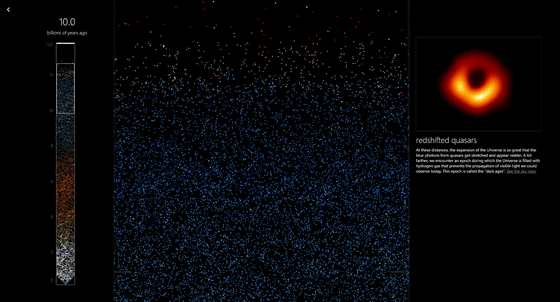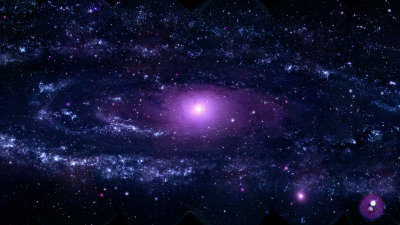An interactive map showing the positions and colors of 200,000 galaxies released

Based on information gathered for over 20 years, Johns Hopkins University has released an interactive map of the universe that allows anyone to access content that was previously accessible only to scientists.
Scroll through the universe with a new interactive map
New Interactive Map Offers Scroll Through Universe-YouTube
This is the map.
The Map of the Universe
https://mapoftheuniverse.net/

When you access and scroll down the page, a fan-shaped map appears. You cannot interact with the overview here.

To operate the map, click 'explore the map' in the lower right.

The Milky Way Galaxy, where the Earth is located, is at the bottom of the screen, and moves away from the Milky Way Galaxy as you move up the screen. Relatively close to the Milky Way is a dark blue spiral galaxy.

1.5 billion light-years away, an elliptical galaxy appears yellower and brighter than a spiral galaxy.

More than 4 billion light years away, the universe expands and photons are stretched out, making objects appear redder. Spiral galaxies are no longer detected, and

When it is about 7 billion light years away, it gradually becomes difficult to see from the earth, but the bluish light

After passing 10 billion light years, the expansion of the universe causes the blue photons emitted by the quasar to be stretched out and appear red. Further away, the universe fills with hydrogen gas, reaching a region called the 'Dark Ages' where observable visible light is blocked.

At the end of 13.7 billion light-years after scrolling all the way up, there is a flash of light immediately after the Big Bang. This light is stretched by the expansion of the universe and comes to us as radio waves. This is called the '

Related Posts:
in Review, Web Service, Posted by logc_nt







